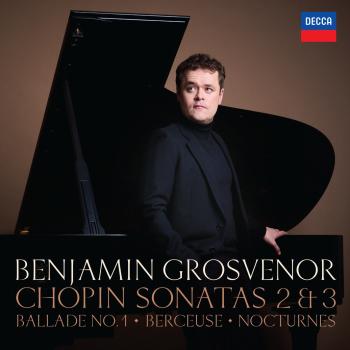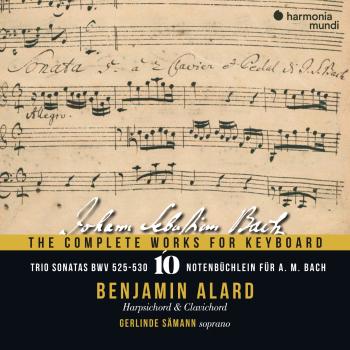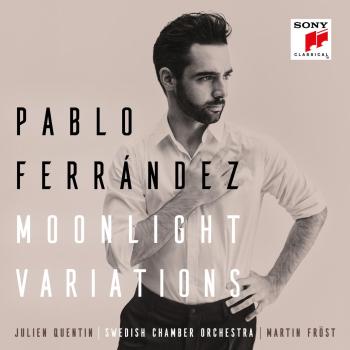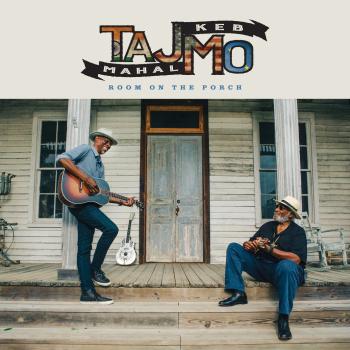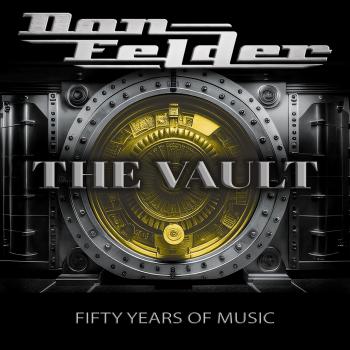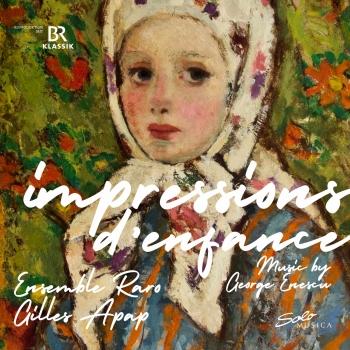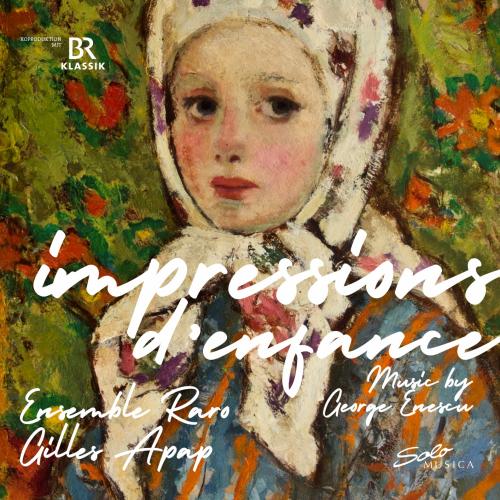
Impressions d' enfance Ensemble Raro, Gilles Apap & Diana Ketler
Album info
Album-Release:
2022
HRA-Release:
06.05.2022
Label: Solo Musica
Genre: Classical
Subgenre: Chamber Music
Artist: Ensemble Raro, Gilles Apap & Diana Ketler
Composer: George Enescu (1881-1955)
Album including Album cover
- George Enescu (1881 - 1955): Quintett für Klavier, zwei Violinen, Viola und Violoncello:
- 1 Enescu: Quintett für Klavier, zwei Violinen, Viola und Violoncello: Allegro moderato 07:51
- 2 Enescu: Quintett für Klavier, zwei Violinen, Viola und Violoncello: Scherzo vivace 05:11
- 3 Enescu: Quintett für Klavier, zwei Violinen, Viola und Violoncello: Andante 06:59
- 4 Enescu: Quintett für Klavier, zwei Violinen, Viola und Violoncello: Allegro con spirito 05:05
- Aubade für Violine, Viola und Violoncello:
- 5 Enescu: Aubade für Violine, Viola und Violoncello: Allegretto grazioso 04:48
- Sérénade lointaine für Violine, Violoncello und Klavier:
- 6 Enescu: Sérénade lointaine für Violine, Violoncello und Klavier 04:57
- Hommage - Pièce sur le nom de Fauré:
- 7 Enescu: Hommage - Pièce sur le nom de Fauré: Molto moderato e cantabile 01:55
- Impressions d'enfance für Violine und Klavier:
- 8 Enescu: Impressions d'enfance für Violine und Klavier: Ménétrier 03:30
- 9 Enescu: Impressions d'enfance für Violine und Klavier: Vieux mendiant 02:54
- 10 Enescu: Impressions d'enfance für Violine und Klavier: Ruisselet au fond du jardin 02:43
- 11 Enescu: Impressions d'enfance für Violine und Klavier: L'oiseau en cage et le coucou au mur 02:12
- 12 Enescu: Impressions d'enfance für Violine und Klavier: Chanson pour bercer 01:50
- 13 Enescu: Impressions d'enfance für Violine und Klavier: Grillon 00:22
- 14 Enescu: Impressions d'enfance für Violine und Klavier: Lune a travers les vitres 02:19
- 15 Enescu: Impressions d'enfance für Violine und Klavier: Vent dans la cheminée 00:27
- 16 Enescu: Impressions d'enfance für Violine und Klavier: Tempete au dehors, dans la nuit 02:10
- 17 Enescu: Impressions d'enfance für Violine und Klavier: Lever de soleil 03:46
Info for Impressions d' enfance
Moshe Menuhin described how, in the 1930s, he heard Enescu’s Sonata No.2 time after time, played by the composer himself at the piano and by his own son Yehudi on his Stradivarius, creating an intimate atmosphere, full of fire and fantasy, sounds and colours. Menuhin had every reason to be satisfied: Yehudi had found a teacher whose unorthodox teaching methods and relaxed authority could bring his unique talents to full fruition. George Enescu, the leading Romanian violin virtuoso, conductor, composer and musical educator of his period, was a worthy ‘replacement’ for his original choice, Eugène Ysaÿe, who was already an old man suffering from ill health. Yehudi later compared him to the supporting hand of Providence, the inspiration that lifted him upwards.
Nevertheless, Enescu saw his true vocation not in playing the violin but in composing. Like Béla Bartók (who was born in the same year as Enescu, 1881), Enescu had rendered outstanding services to the folk music of his native country, and in the process had received important stimuli relating to his own music. His Op.1, an orchestral work with wordless choir dating from 1897, bears the programmatic title Poème roumain (Romanian Poem), and his most successful compositions were the Romanian Rhapsodies, Op.11 (1901/02), which he later almost came to loathe. Johannes Brahms, whom Enescu met as a young man, experienced a similar situation with his Hungarian Dances. Enescu’s importance for the creation of an independent Romanian musical scene can hardly be overestimated; it thus seems logical that he enjoyed the particular protection of the music-loving Romanian royal family. ...
Gilles Apap, violin
Diana Ketler, piano
Ensemble Raro
Gilles Apap
Described by Yehudi Menuhin as ’’A true violinist of the 21st century’’, Gilles is known for his virtuosity, unique approach to music and the skill to bring joy to every concert hall. He delivers distinctive performances of the standard classical repertoire combined with genres such as jazz and folk from around the world and the result is unique programming merging the borderlines between musical styles.
Born in Algeria to a French family, Gilles started playing music at an early age and began his studies in France. Later, he moved to America and continued his studies at the Curtis Institute, choosing to settle in California. Very early in his career he decided to move away from the constraints of the international music industry, looking for his own way beyond the conventions and expectations related to a commercial career.
As a soloist Gilles has performed with orchestras such as Leipzig Gewandhaus, San Francisco and Vancouver Symphony, Hamburg Philharmonic, Boston Philharmonic, Berliner Symphoniker, Russian National Philharmonic, Israel Philharmonic, often play directing as well as performing an extensive list of violin concertos.
With his quartet ‘The Colors of Invention’ (violin, accordion, double bass and cimbalom), Gilles presents chamber music with fusion of classical pieces from Vivaldi, Ravel and Bartok with traditional folk tunes. The Ethno Jazz band ‘Meduoteran’ (violin, accordion and saz) is one of the most recent projects in which Gilles is involved, performing in various Jazz and folk festivals around Europe. ‘The Transylvanian Mountain Boys’ is another highly successful crossover band formed by Gilles, together they perform across the globe and have released 3 CDs for Sony Classical. Gilles was taking the artistic leadership position at the Nordic Chamber Orchestra until the 2017/2018 season.
Gilles has also collaborated with the Celtic fiddler Kevin Burke, Indian violinist Dr. L. Subramanian, gypsy violinist Roby Lakatos, jazz violinist Didier Lockwood and contemporary flamenco dancer Belen Maya, amongst others.
Alongside performance, Gilles is very involved in education with his teaching philosophy connecting strongly with cultural diversity and the freedom of interpretation through improvisation which in August Ariana Todes, former editor of The Strad, reflected in an interview highlighting these eclectic aspects of his career
After participating in the International Menuhin Competition in 1985, Gilles established a lifelong relationship with Yehudi Menuhin. Together they worked on Gilles’ legendary cadenza of Mozart’s Third Violin Concerto, which was filmed and directed by Bruno Monsaingeon. Known for his documentaries about Gould, Richter and Oistrakh, Monsaingeon directed two further films about Gilles Apap and his approach to music, and declared that the violinist’s “art represents music in its greatest possible purity.”
Ensemble Raro
Außergewöhnliche kammermusikalische Augenblicke schaffen, das ist das Ziel des Ensemble Raro. Mit kontrastreichen Programmen und Formen, in denen epochenübergreifend, musikalische und literarische Beziehungen geknüpft werden, verbindet das Ensemble die Künste miteinander. So realisierte das Ensemble Raro mehrere Literatur-Konzerte mit Wolf Euba zu Mozartbriefen und zum Thema „Liebe“, experimentierte mit DJs und Video-Jockeys mit Bildern zu Kammermusik und neuen Sounds genauso wie es interessante und vielfältige Kammermusik-Abende darbietet. Um dies möglichst konsequent zu realisieren, bevorzugt das Ensemble Raro eine kontinuierliche Zusammenarbeit mit Festivals und Programmgestaltern. Auf diese Weise kann das Publikum einen engen und beständigen Kontakt zur Musik und künstlerischen Zusammenhängen entwickeln. Die solistischen Fähigkeiten der einzelnen Mitglieder des Ensembles ermöglichen weitgefächerte Programmgestaltung von Solo bis Quartett und darüber hinaus Konzerte mit Gastmusikern bis zur Oktettbesetzung.
Ensemble Raro hat die englische und deutsche Erstaufführung des Klavierquartetts von Peteris Vasks in London und Traunstein gespielt und ist Ensemble in residence beim „Chiemgauer Musikfrühling“ in Traunstein, bei der „Mozartiade – Schwäbischer Musiksommer“ in Augsburg, bei den „Pèlerinages“ in München, beim „SoNoRo“ Festival in Bukarest und beim Kobe International Arts Festival in Japan. Besonders gelobt wurde die Aufführung von Kammermusikwerken Walter Braunfels’ und das Porträt-Konzert George Enescu in der Residenz München. Aufgetreten ist das Ensemble Raro bereits an der Seite von u.a. Konstantin Lifschitz, Baiba Skride, Adrian Brendel, Daishin Kashimoto, Marlis Petersen, Carolin Widmann in der Tate Gallery in London, in der Münchener Residenz, im Atheneum in Bukarest und beim St. Gallen Musikfestival. Das Ensemble Raro leitete Meisterkurse in Rumänien und Japan. Kinderkonzerte und Projekte mit Nachwuchskünstlern sind den Musikern des Ensemble Raro ein Anliegen, regelmäßig treten sie in dieser Mission in Deutschland, Rumänien und Japan auf. Ein umfangreiches Jugendförderprojekt ist in Rumänien entstanden das „SoNoRo – INTERFERENCES“.
Der Namensvetter des Ensembles, Meister Raro, die phantastische Gestalt aus Robert Schumanns geheimnisvollen Davidsbund, vereint in seiner Persönlichkeit die beiden Charaktere Florestan und Eusebius, die für die innere Zerrissenheit des Komponisten stehen. Er zeichnet sich durch einen tiefen Verständnis der Notwendigkeit des Fortschritts in der Musik aus, vor allem durch den Versuch neue, unbegangene Wege zu gehen.
Zusätzlich zur regelmäßigen Partnerschaft mit dem Bayerischen Rundfunk ist das Ensemble international in den Medien vertreten, so bei TVR, RRC und RRM (Rumänien), NHK (Japan) und Radio France Internationale. Im Jahr 2007 hat das Ensemble eine mehrjährige Zusammenarbeit mit den Labels Solo Musica und Humanitas vereinbart. Im Herbst 2007 erschien die erste CD „Songs and dances of life“, die sich länderübergreifender Musik u.a. Béla Bartóks, Bohuslav Martinů, Franz Schubert widmet und von der Fachpresse sehr gelobt wurde.
This album contains no booklet.

